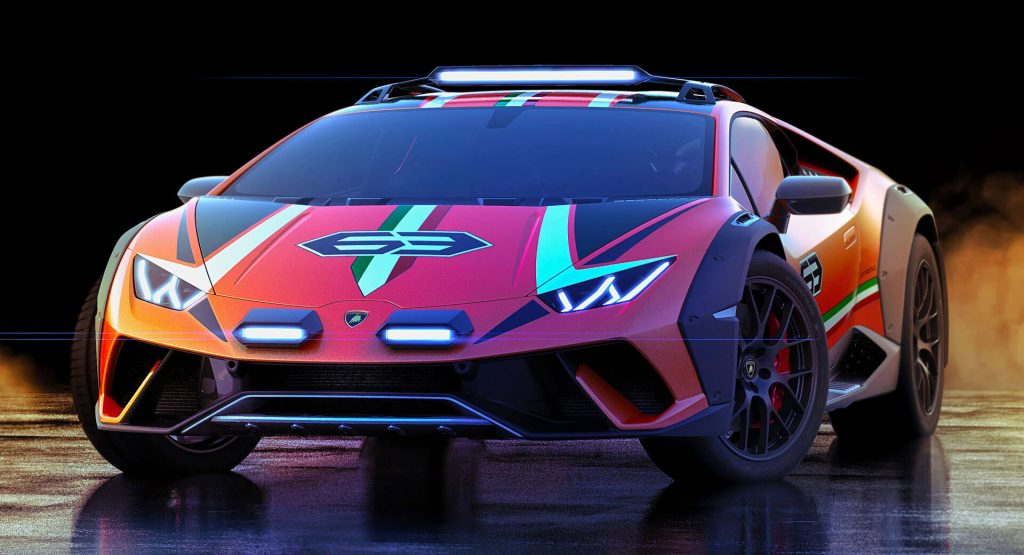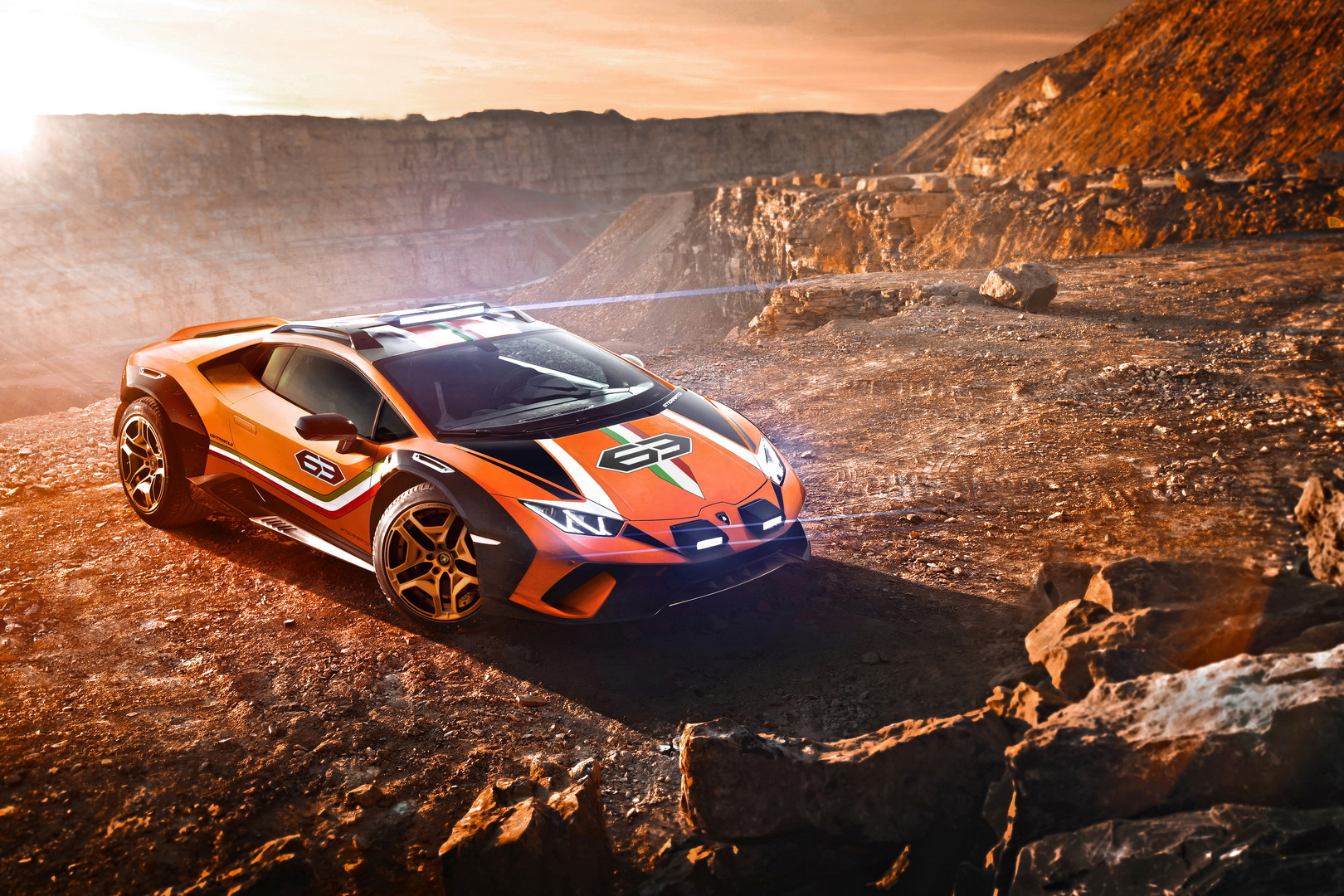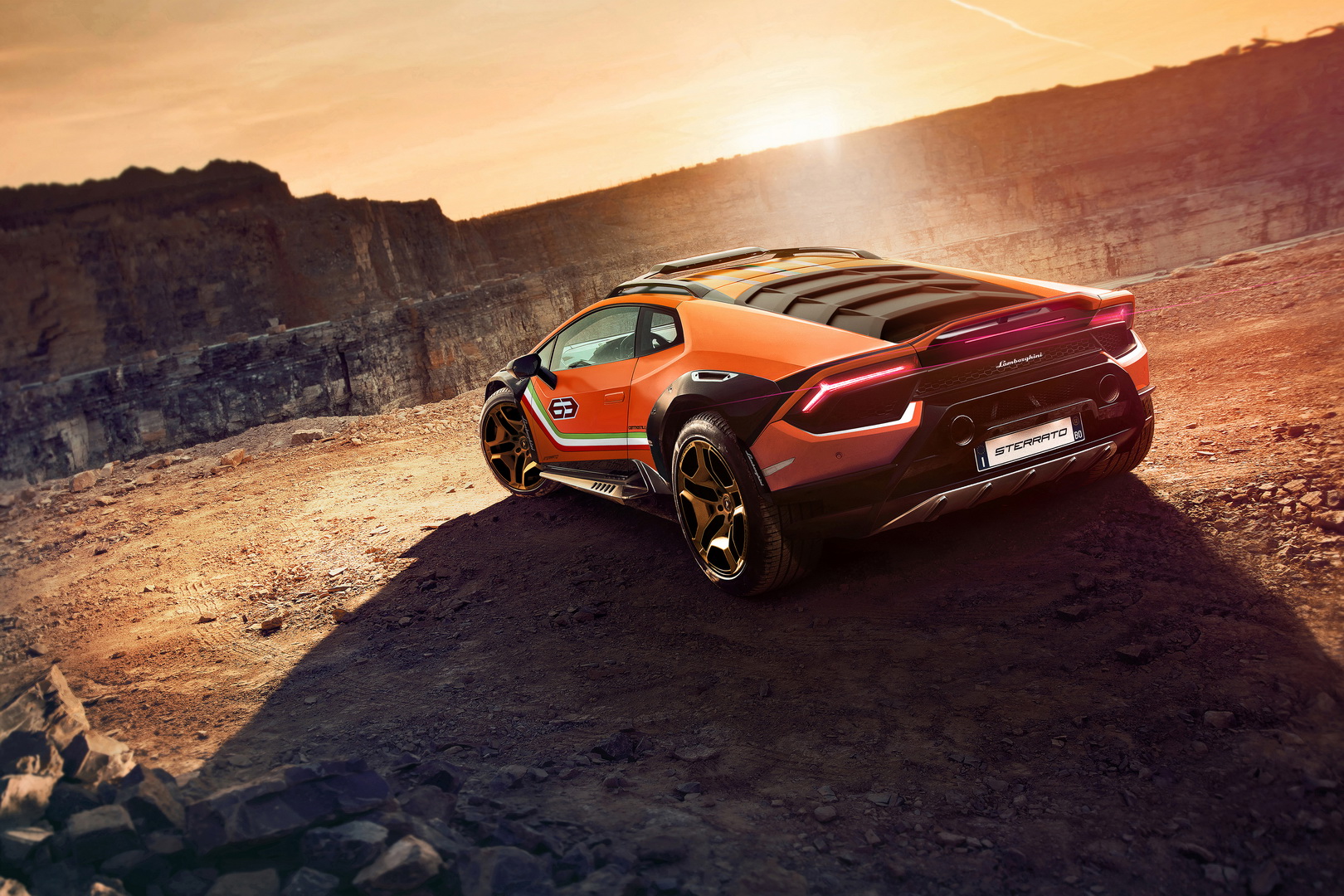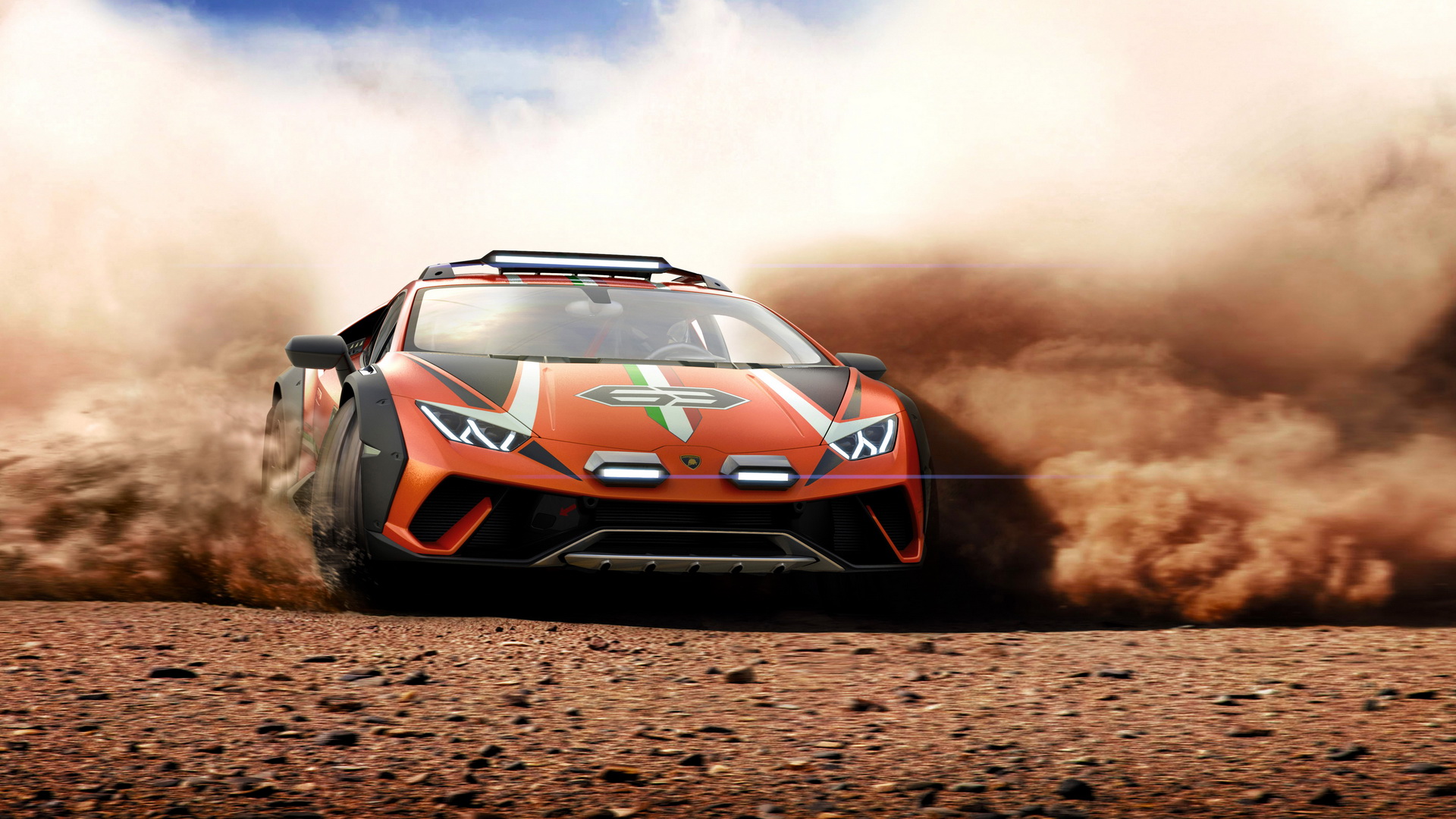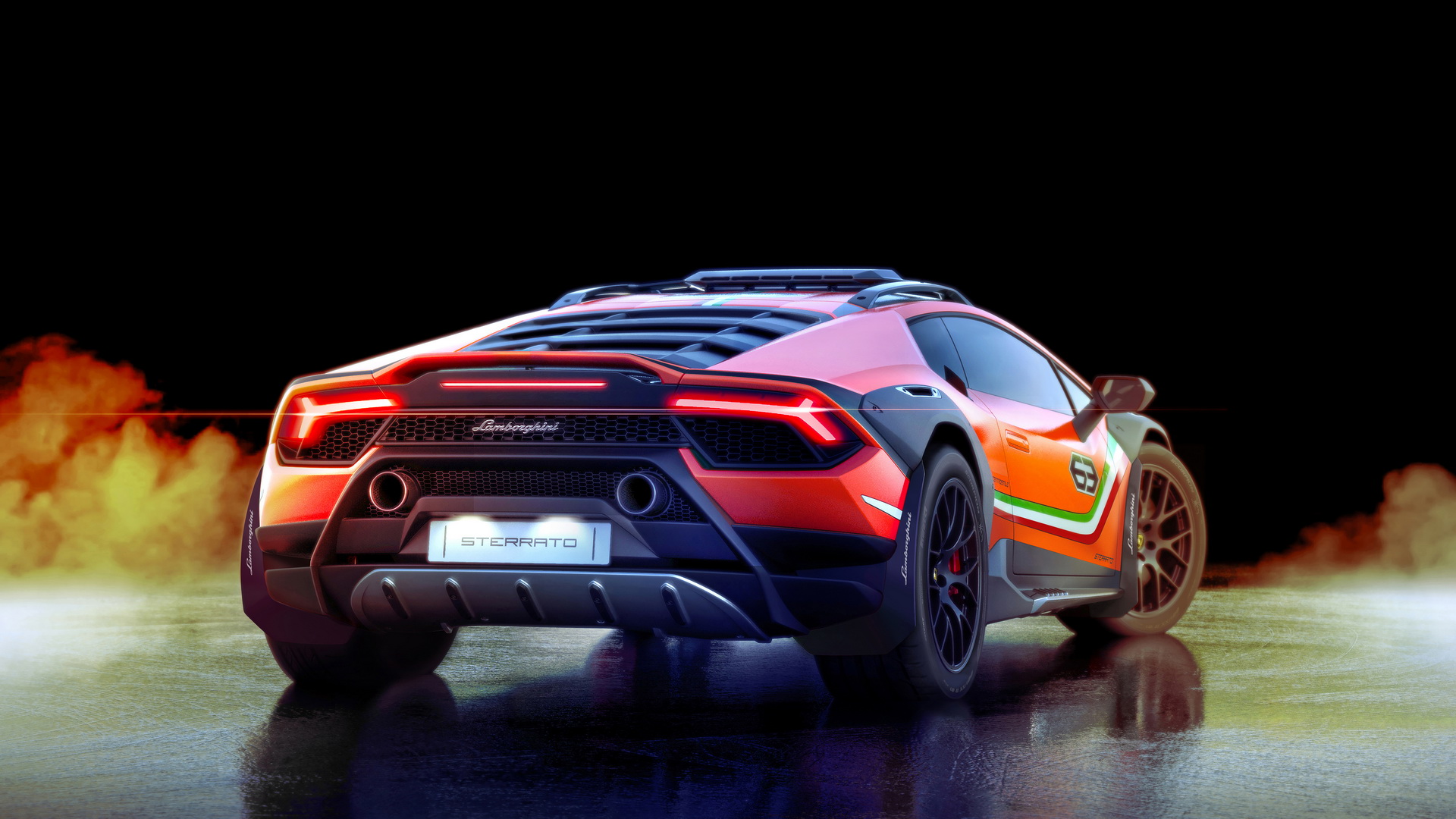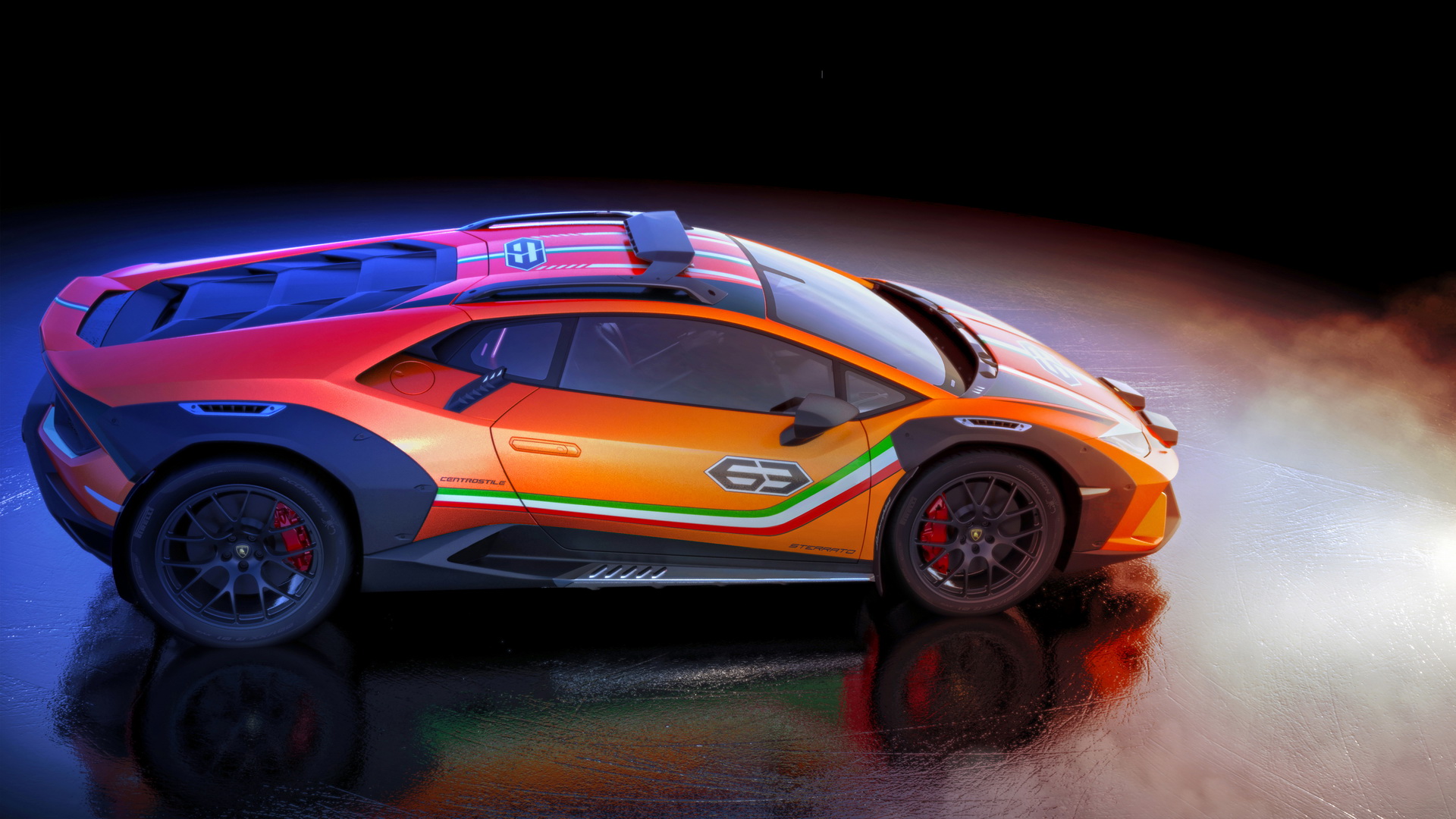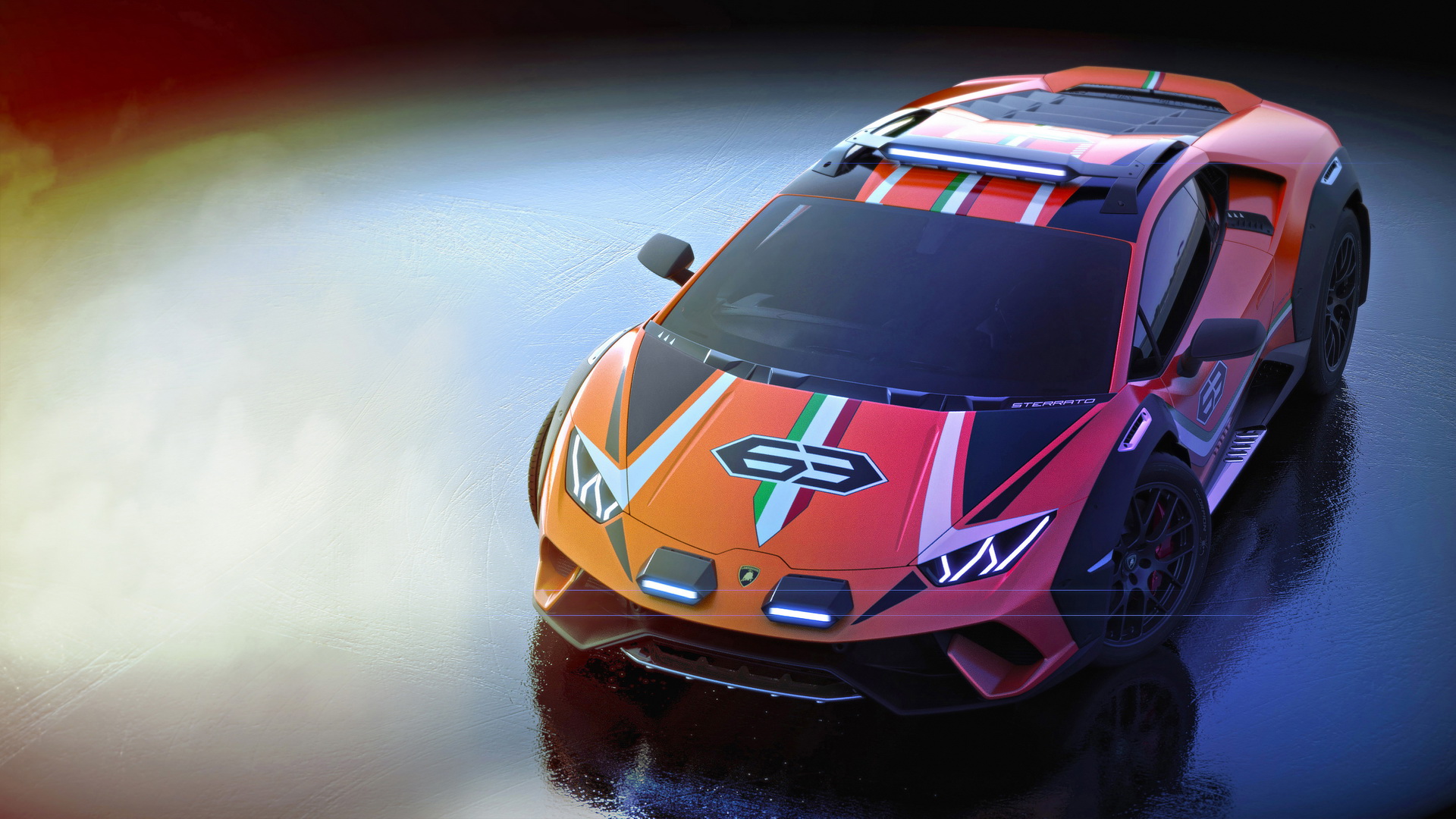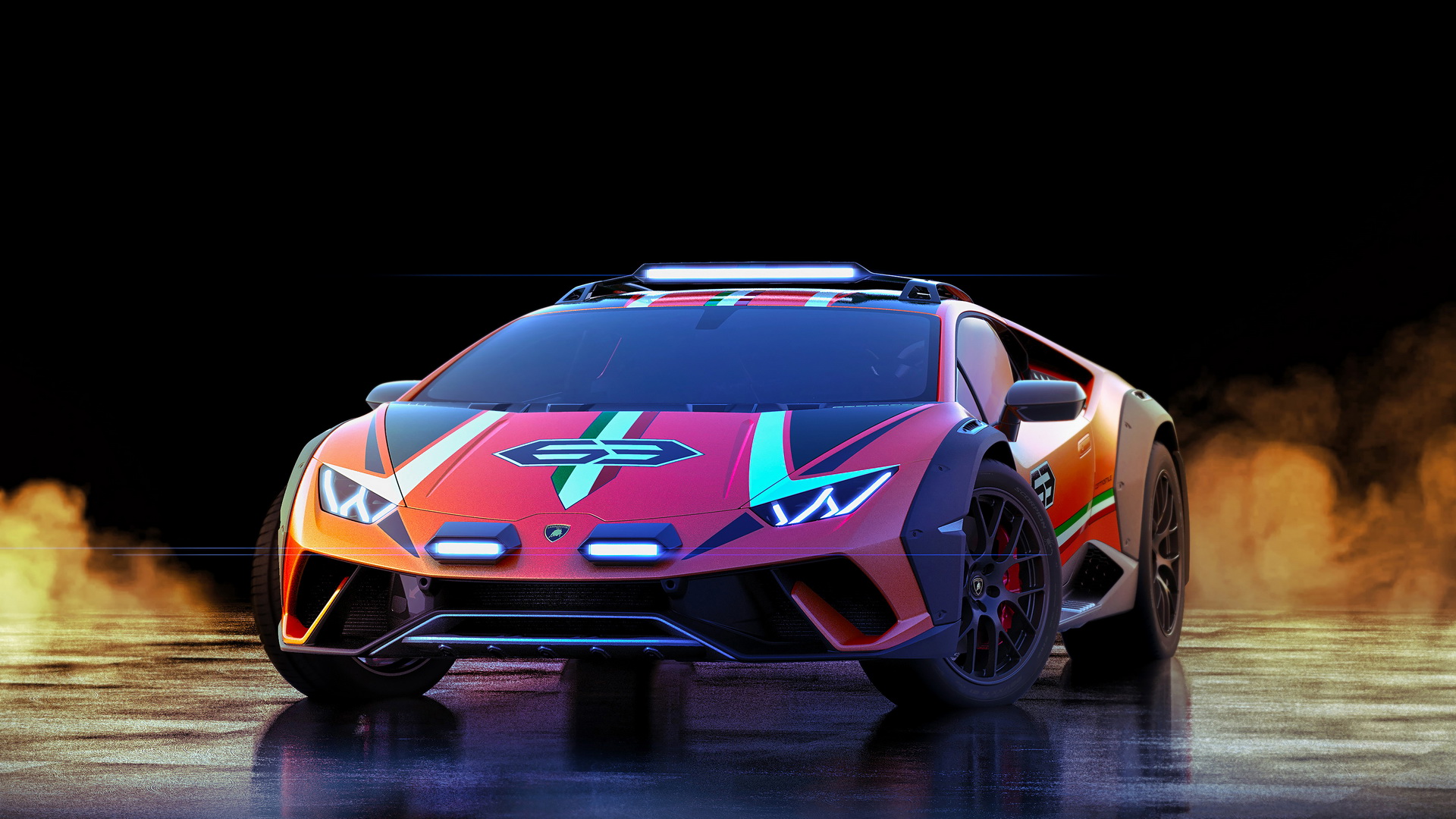Blue-blooded supercars can only be driven on silky-smooth roads. Well, there’s a first time for everything: meet the Huracan Sterrato, Lamborghini’s latest concept, which allows its occupants to explore dirt roads without being afraid of damaging anything or being stranded after veering off tarmac.
Based on the Huracan Evo, the Sterrato (Italian for ‘dirt’) gets some of the Urus’ expertise and features plenty of upgrades, all of which make it an off-road ready supercar. The ride height has been increased by 47 mm (1.9 in), the front approach has been sharpened by 1 percent and the departure angle by 6.5 percent.
Lamborghini has also widened the wheel tracks by 30 mm (1.2 in) and equipped it with 20-inch rims, shod in a set of specially-developed tires,with higher side walls that improve grip and bump absorption. Wide shoulder blocks, underbody reinforcements in the form of front and rear skid plates and aluminum-reinforced side skirts, as well as body protection, have turned the Huracan into a true off-road-ready supercar.
Providing further peace of mind is the composite bodywork with stone-deflecting protection around the air intakes and engine, along with mud guards made out of hybrid materials like carbon fiber and elastomeric resin. Navigating in low-light conditions won’t be a problem either thanks to the LED bumper lights with flood function and the roof-mounted LED light bar.
The interior of the Huracan Sterrato has been enhanced with aluminum floor panels, carbon bi-shell sports seats, four-point seat belts and a lightweight titanium roll cage.
Power comes from the same 5.2-liter, naturally aspirated V10 as the Huracan Evo that’s rated at 640 PS (631 hp / 471 kW). The four-wheel drive, four-wheel steering, torque vectoring and modified suspension are controlled by the Lamborghini Dinamica Veicolo Integrata (LDVI), which has been calibrated especially for off-road driving and tuned to enhance traction and acceleration, providing enhanced rear-wheel drive.
“The Huracan Sterrato illustrates Lamborghini’s commitment to being a future shaper: a super sports car with off-road capabilities, the Sterrato demonstrates the Huracan’s versatility and opens the door to yet another benchmark of driving emotion and performance”, company CTO Maurizio Reggiani said. Lamborghini’s R&D and design teams are constantly exploring new opportunities and delivering the unexpected as a core characteristic of our DNA, challenging possibilities while inspired by Lamborghini brand heritage.”
Is this Lamborghini’s way of telling us to expect such a supercar in the future, perhaps based on the Huracan’s successor? Nobody knows at this point, but this isn’t the first time the Italian company has tried something similar. In 1973 and 1974, test driver Bob Wallace modified a Jarama and an Uracco, respectively, for desert use, thus “combining Lamborghini’s high performance and off-road capabilities”, the automaker noted.



